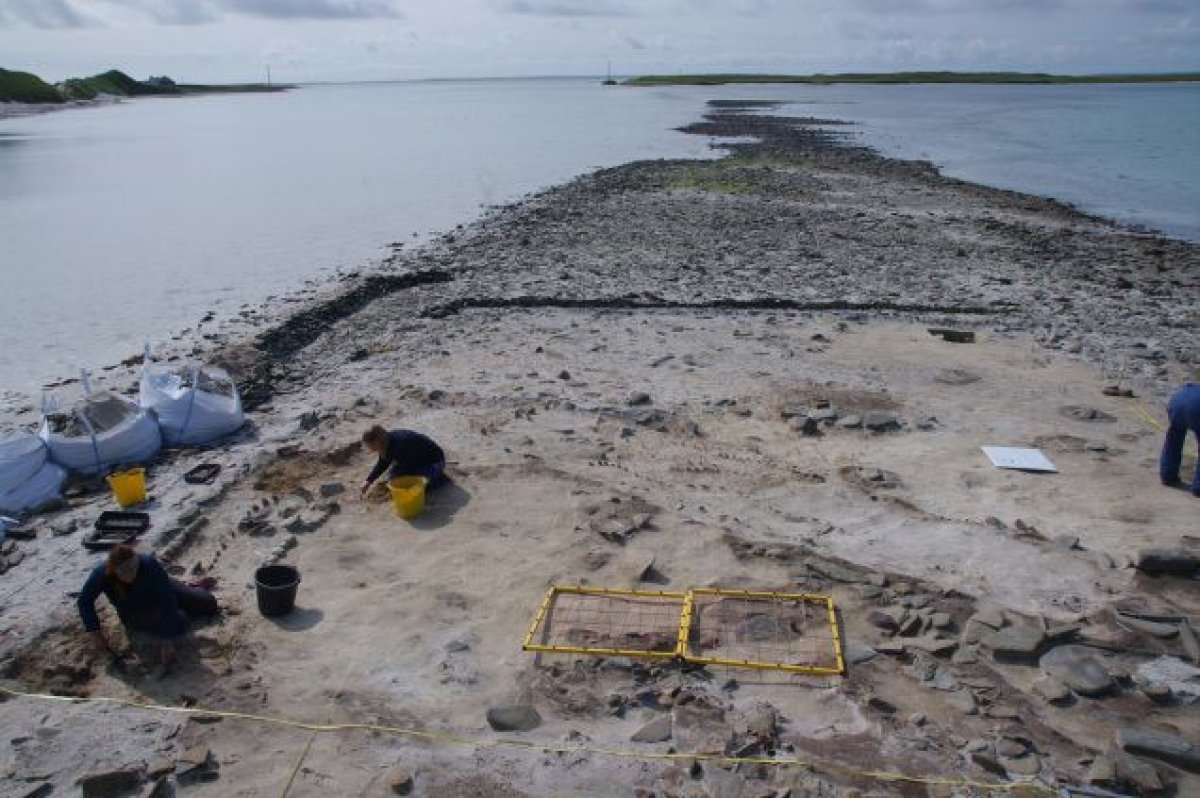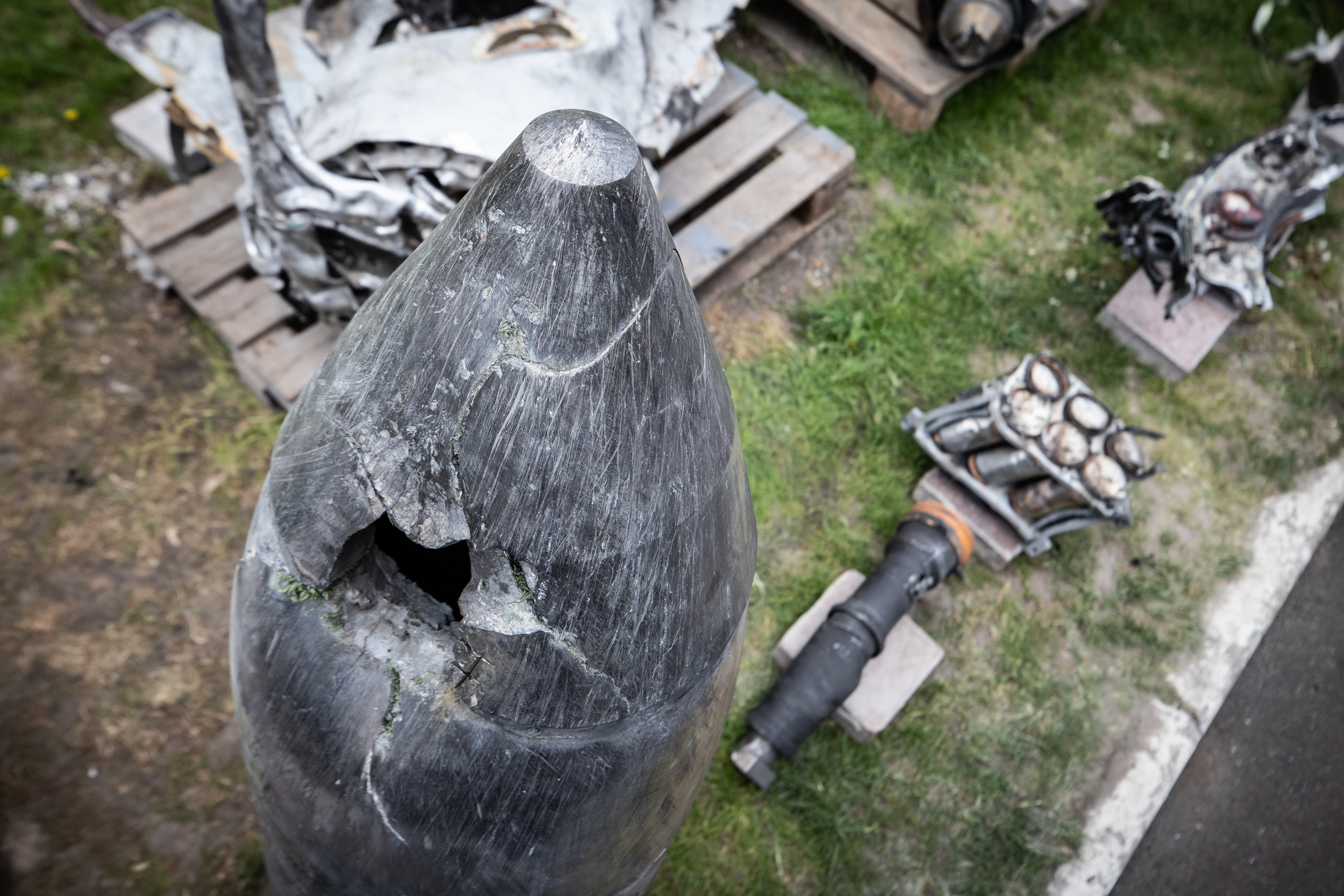Archaeologists working on Scotland's Island of Sanday made an "amazing and unexpected" discovery: two pits full of the bones of 19th century whales.
A team of archaeologists based in Orkney, Scotland, originally traveled to Sanday to excavate a Neolithic site. And while they did find portions of early Neolithic houses, they also found portions of 12 whale skeletons. Historical records told of a pod being stranded and later buried at Cata Sand, the site where the bones were found, but how and why they got there remains a mystery. The whales could have either been "ca'd"—driven into the shallows deliberately—by Sanday's 19th century human inhabitants, or simply been beached on their own. Either way, according to a recent BBC article on the findings, they would have been a windfall for anyone who could reach them.
Sanday is inhabited by just 500 people. Locals provided the researchers with an account, published in 1875, of a 19th century visit to Cata Sands; it explained why the bones had been buried in the manner that they were.
"In it the author describes the scene where no less than 80 whales were driven ashore on the Sabbath only to be butchered for their blubber," reads a blog update from the University of the Highlands and Islands Archaeology Institute, with which some of the team is affiliated.

But when a visitor came to the island, they complained about the smell of rotting blubber. The locals then very considerately buried the carcasses on the beach.
"And there they remained for over 200 years…forgotten by locals and visitors alike," as a later UHI Archaeology Institute blog entry on the discovery put it.
The exact species of the whales is unknown. Claire MacKay, who is studying whale exploitation at UHI, told BBC Radio Orkney they might have been long-finned pilot whales. Another possibility is the Risso's dolphin. It'll take a DNA analysis to be able to say for sure.
The researchers emphasize how valuable these animals, however they arrived on shore, would have been. "Whales and other cetaceans were a huge bounty," MacKay told BBC Radio Orkney. "[F]or fuel, meat, architecture—such as using whale ribs for building supports and roofing material—and also for artifacts, which continue to be found throughout Scotland, other areas of the U.K., and across the north Atlantic."

MacKay, along with archaeologists from the University of Central Lancashire and volunteers from Sanday Archaeology Group, excavated eight of the skeletons and recently began to examine them at the UHI Archaeology Institute laboratory in Kirkwall. They're assembling the bones in anatomical order.
The skeletons were missing their heads, which makes sense as whale heads were valuable both as trophies and for the oil they contained; every part of the carcass would have been valuable.
"There is evidence of using the vertebrae, hollowing out the middle, and using them as a storage vessel," MacKay told BBC Radio Orkney of how Cata Sands residents used whale parts at the time. "There's also evidence of using the big jaw bones of certain whales to make tools, because it's easy to work with."
However, to the researchers' surprise, the bodies didn't appear to have been butchered. Why the people who buried them didn't take advantage of the considerable meat they provided remains unclear.
The Orkney archipelago has been fruitful for archaeologists this year. The Scotsman reported in August that an excavation on the island of Swandro had yielded a number of Neolithic artifacts and structures, including an ancient tomb that Viking settlers had later decided to fill with "a number of butchered sheep, at least three cats and a coin of Eanred, a ninth century king of Northumbria."
Uncommon Knowledge
Newsweek is committed to challenging conventional wisdom and finding connections in the search for common ground.
Newsweek is committed to challenging conventional wisdom and finding connections in the search for common ground.
About the writer
Kastalia Medrano is a Manhattan-based journalist whose writing has appeared at outlets like Pacific Standard, VICE, National Geographic, the Paris Review Daily, ... Read more
To read how Newsweek uses AI as a newsroom tool, Click here.








